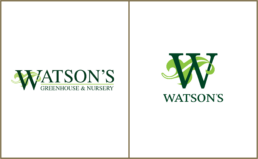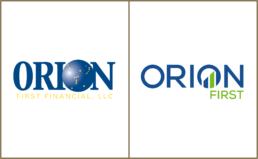Your brand identity: elements of a solid brand foundation
Brand is a function of identity, and the foundation of any identity is the values shared by you and your stakeholders.
We say “stakeholders” here because we want to emphasize the importance of people who aren’t your customers, yet who have a vested interest in your business. This includes customers, but also encompasses employees (including management), as well as colleagues in the industry, relevant media, and even your competition.
Start with your values
A core value is one word or phrase that reflects a shared philosophy, principle, or belief that guides action and culture, and often distinguishes it from others. A company’s core values are the backbone around which the organization is framed.
Examples of core values: integrity, courage, results, innovation, honesty, love, legacy, strength, risk, empathy, security, growth, teaching, play, excellence, spirituality, advocacy, serving, learning, fun, family, passion, inspiration, humility, spontaneity
Values shape who we are, what we are, and what we choose to do. This is true for companies too. They are a natural extension of what a company’s people believe in.
You can have a long list of values, but for them to function as core values for your business, they need to be specific, they need to be shared, and they need to be evident in your organization: in the actions you take, in your decisions you make, in the products or services you sell, and in your overall style.
From values, a purpose
A company’s statement of purpose reflects why it exists. It should be aspirational.
It’s not an objective—that is, it’s not meant to be a distant goal—though it may reflect a desired outcome. It’s also not the same thing as your mission statement. Purpose is different from mission in that the former expresses a motivation, and the latter expresses how you apply it.
A well thought-out purpose can be lofty in scope, so long as it’s achievable within the context and capabilities of the organization.
Broadly speaking, a purpose might be thought of as more of an internally facing statement that orients and informs company culture and behavior, whereas a mission could be viewed as more of an external facing statement that orients and inspires customers.
Examples of statements of purpose:
Our purpose is to nourish people and the planet. —Whole Foods Market (pre-Amazon)
We champion every client’s goals with passion and integrity, as if they were our own.
—Charles Schwab
To connect people to what’s important in their lives through friendly, reliable, and low-cost air travel. —Southwest Airlines
To work with others to overcome the obstacles that poverty, violence, disease and discrimination place in a child’s path. —UNICEF
A good statement of purpose is a reason for being and doing that is embraced by all members of your team. You can draw a line to it directly from your values.
From purpose, a mission
A mission statement is an expression that synthesizes how a company fulfills its purpose.
Companies use mission statements to focus and explain their reason for being. Mission statements invoke values. They apply purpose to a specific end. When well-formulated, they inspire goodwill in employees, customers, and the public, and they provide a philosophical framework for strategic decision making.
Often lost in discussion of mission is its link to the notion of assignment. Missions are operations dictated by a higher power and evoke a sense of calling and duty. They are an authentic vocation born of one’s values and personality. A good branding agency can help you craft one that aligns with your values and purpose.
From mission, a vision
Vision statements are sort of an odd duck in the branding world. Some companies have ‘em, some don’t. They aren’t critical to your operations, nor to your growth. However, an authentic, well-thought-out vision—like your purpose statement—can help remarkably well in strategic planning meetings down the line.
Suffice it to say, your vision statement should be a forecast of your ideal world—however big that may be—once you’ve “won” at your business, completing your mission and achieving your goals.
Your vision should be lofty. Still, the more concrete the better, and it should still be achievable at some unspecified future date. And of course, it ought to line up clearly and logically with your values, purpose, and mission.
Value propositions and positioning statements
A value proposition is an expression of the benefit offered by your company and brand. It’s useful in crafting messaging to your customers, because it distills the main reason for choosing you.
A positioning statement articulates a niche in a marketplace that your brand inhabits. It’s generally meant more for internal use, to guide sales and marketing efforts.
Both of these tools are useful in helping you (and your stakeholders) understand what’s so special about your business. They aren’t part of your brand foundation; they just help you wrap your head around your brand, so you can do a better job of marketing it.
We include value propositions and positioning statements here because there’s often a lot of confusion about these terms and how they relate to small business branding. Because they are related—they’re just not part of your core identity. If your brand foundation is the concrete on which your business rests, then these are part of the wooden framework that goes up next and holds things together.
Promoting your brand: getting everyone on board
Once you’ve established your core identity, you need to make it stick. And to do that, you need to stick to the program. Once you have a solid brand foundation—along with a visual identity—your messaging needs to always align with it.
To do that, it helps to have a couple of extra tools beyond the foundation.
The brand guide
A brand guide is a document that either your in-house marketing team or your branding agency will put together for you. It should have detailed guidelines for using your visual identity—which includes your logos and/or wordmarks, color palette, typography, and any proprietary imagery or iconography—as well as guidelines for brand voice and messaging. A brand guide will often include your core identity (values, purpose, mission and vision) as well.
The brand launch
Just as a new brand is more than a logo or website, launching a new brand requires more than sending out a press release and an email to customers.
Launching your brand is no less than announcing a new identity. It could be a small change (a new logo and typeface) or a big one (starting from scratch). Either way, you’ll want to announce it to your stakeholders and relevant media with a corresponding level of fanfare.
In general, this is where a branding agency also excels. In-house marketing teams tend to be excellent at ongoing marketing needs, including channels that you use on a daily basis. Agencies can usually push your message out through more channels and a wider audience.
Which is perfect for a brand launch (and possibly for your ongoing marketing needs as well).
Know your stakeholders
Your brand isn’t just for your customers. You probably know this, but we can’t stress this enough.
Your brand is for all of your stakeholders. Anywhere your reputation or credibility or personality matters, your brand matters. Which means that your business has a LOT of stakeholders. You may be surprised at just how many people have an interest in your company’s outcomes.
- Customers
- Employees
- Leadership team
- Investors & creditors
- Business partners
- Vendors, suppliers, and landlords
- Colleagues & thought leaders
- Competitors
- Communities & interest groups
- Governments
- Prospective customers
- Prospective employees
- Prospective vendors
There are probably others in your world, but these are the main stakeholder groups you should be aware of. Your brand is automatically relevant to them. Whether or not they notice it, remember it, or think highly of it is largely up to you and your brand strategy.
Without going into too much detail, know that for each stakeholder group there are strategic factors that you’ll want to consider. These are the key decision-making criteria that each group uses when interacting with your business.
No matter the size of your business, knowing your stakeholders and their strategic factors is critical to a successful brand foundation and business growth.
Rebranding: when your identity is no longer you
Most businesses don’t hire a branding agency until they are already experiencing growing pains. Sometimes it’s just their visual identity that needs a refresh, and sometimes their core identity no longer accurately reflects their business model, and vice versa.
Rebranding is the process of assessing a business’s brand identity and realigning it with its current business model and value proposition. In some cases, the problem with the brand turns out to be an inadequately framed core identity.
Assess what's wrong with your old identity
The first step in rebranding is to take stock of your current brand: your visual identity, your mission, vision, and values, your purpose, and your value proposition and positioning statements. Compare these to the needs and values of your customers. Identify the size and nature of your brand gap (the distance between your identity and value prop and the needs and values of your intended customers).
Ask yourself these questions:
- Is this the original audience you intended to reach?
- Has your audience changed, or have you?
- Where do you see the greatest growth opportunity?
- Can your brand gap be closed by increasing brand awareness? Or would a misalignment remain?
There are, of course, other factors that will contribute to your assessment. Finances, market conditions, staffing, and technology account for some of these. The best way to evaluate the strength of your brand and your rebranding needs is to consult with branding professionals. Partnering with a branding agency can be a wise investment: they’ll not only provide expert advice on rebranding, but they understand how business works, and will listen carefully to learn the nuances of your enterprise.
Brand refresh vs. rebuild from core vs. lipstick on a pig
When all that’s needed is a brand refresh, that’s a good thing: it means your core identity is built on a solid foundation. All you need to do is realign it with current market trends and aesthetics.
A brand refresh most often consists of a redesign of your website’s front-end (the part that your customers see), and an update to your visual identity suite: logos, typefaces, and color palettes.
Conventional wisdom holds that businesses ought to budget for a brand refresh every 2-3 years. And this isn’t new: think of a department store that hasn’t updated their look or merchandising in several years. It feels staid, run-down, and uninspiring. You don’t want to spend time there—just enough to see if they have what you’re looking for and then get out. You may associate a shabby department store with poor customer service and even inferior products. And department stores have long known this, and that’s why they’ve historically invested portions of their budgets to merchandising, signage, and so forth. It’s amazing what a little fresh paint can do.
Similarly, if you’re at all growth-minded, you’ll want to apportion some of your marketing budget to brand refreshes. If the time comes and you don’t need it, great! More money in your pocket! But most business owners find themselves actually using and benefiting from this investment. Businesses typically see an uptick in sales after a brand refresh.
Case study one: Dualos branding refresh
Case study two: Watson's branding refresh

Sometimes your brand assessment points to a more serious problem: a fundamental misalignment between your core identity and your customers’ needs and values. Whether the problem was there from the start or whether your business (or your customer) has simply evolved over time, you may find yourself needing to rebuild from core. And better to catch it now, for it can happen sooner than you think.
Rebuilding from core isn’t overly complicated; in fact, the same steps taken in brand refreshes are applied here. The difference is that, instead of simply aligning your new visual identity to your brand foundation, you’re first revising that foundation.
When rebranding from your core identity, you’ll need to re-examine your values, your purpose, your mission, and your vision.
- Are they precise and accurate?
- Are they inspiring and realistic?
- Do they represent all stakeholders?
- Can they manifest in specific behaviors?
Case study three: Orion First rebrand

Again, a good branding agency can help conduct a thorough assessment and can help rebuild your brand from the ground up in a way that generates real excitement—and thereby, real results—leading to sustainable growth over a long period.
The thing to watch out for when rebranding is the fallacy of lipstick on a pig. This happens when business leaders have a vested interest—usually saving money—that causes them to cut corners on their rebranding efforts.
Most often what will happen is a company submits a RFP to agencies for help with a brand refresh. The company’s leadership will determine, typically without a thorough brand assessment, that all they need is a new logo and website. Therefore they dismiss proposals from agencies that are deemed to be upselling them on a need for a more thorough evaluation.
They proceed with an affordable proposal from an agency that is more than happy to do the work. And while the work itself may be quite good—and may even see the bump in revenue that comes with any brand refresh—if the foundation remains unexamined, then future growth not only isn’t assured, but it suddenly becomes a whole lot more expensive.
That’s why, when the “check engine” light comes on, it pays to bring your vehicle to a mechanic for diagnostic tests.
Using a marketing agency to build your brand foundation (aka the conclusion)
Throughout this article, we’ve alluded to branding agencies as though they’re separate entities from your traditional marketing and advertising agency.
The truth is, marketing agencies use many different terms to describe themselves, and there is no standard language. The term an agency uses will point to its strengths and specialties, however.
Let’s look at some of the different terms used, and what they indicate. The terms on this list aren’t mutually exclusive; some agencies excel in multiple categories. Which one is right for you?
Different agencies for different needs
Focuses on paid advertising across all channels (digital, print, broadcast, out-of-home). Work emphasizes creative design and brand fidelity.
A small agency (often around 2-10 employees) that typically offers more customized services based on industry, niche, or marketing channel.
Often provides full-scope marketing and advertising services, with a focus on creating, launching, and managing brands for the purpose of business growth and development.
Specializes in content marketing, including blogs, video, white papers, eBooks, podcasts, and content strategy and management.
A catch-all term that generally implies a focus on advertising and design, as well as a broad scope of marketing services.
Offers strategic and creative services focused on digital channels such as social media, online ads, and app development, ranging from full-scope marketing to highly specialized niches.
An agency that offers event marketing and event management, promoting clients through trade shows, conferences, and special events.
Provides a breadth of marketing and branding services with a deep understanding of business growth, organizational behavior, and strategic management.
Focused strictly on publicity, unpaid media exposure, public relations, and sometimes crisis management, sometimes with web and social media marketing components.
Sells printed products, signs, and promotional merchandise, and sometimes offers custom design services as well.
Focuses exclusively on search engine marketing and optimization, often in tandem with content marketing services.
Focuses exclusively on building, maintaining, monetizing, and growing client social media presence, including both interactive content and paid advertising.
An agency that creates software solutions such as websites, apps, and customized SaaS solutions, as well as a varying range of other marketing services.
When looking at marketing agencies to partner with, consider looking beyond your immediate needs. What will your company look like in five years? Ten? What does your vision statement say? What is your growth plan?
Your own specific needs may vary, so unless yours is a large enterprise-scale business, you’ll likely want to partner with an agency that can handle multiple elements of your marketing.
The sweet spot: branding with an eye toward growth
Alas, building a strong brand foundation doesn’t mean you’ll never have to worry about branding again. Branding is akin to hygiene: it’s a regular practice for the maintenance of a healthy business.
Whether you are rebranding from the core, or looking to take your brand to the next level, it helps to partner with an agency that can advise on strategic matters in addition to executing brand marketing initiatives. Not all agencies provide expertise in small business growth planning, and it’s rare to find one that excels at both branding and growth strategy.
Sands Costner is just one such agency, though of course there are others. If you’re interested in learning more about the health of your brand and how it can be used to grow your business, please contact us. Or read one of our other articles on the subjects of growth planning and building a strong brand foundation.
About us
Sands Costner is a marketing and advertising agency that specializes in preparing small businesses for—and guiding them through—stages of major growth. We exist to help companies meet their objectives year after year through strategic planning and effective branding.
